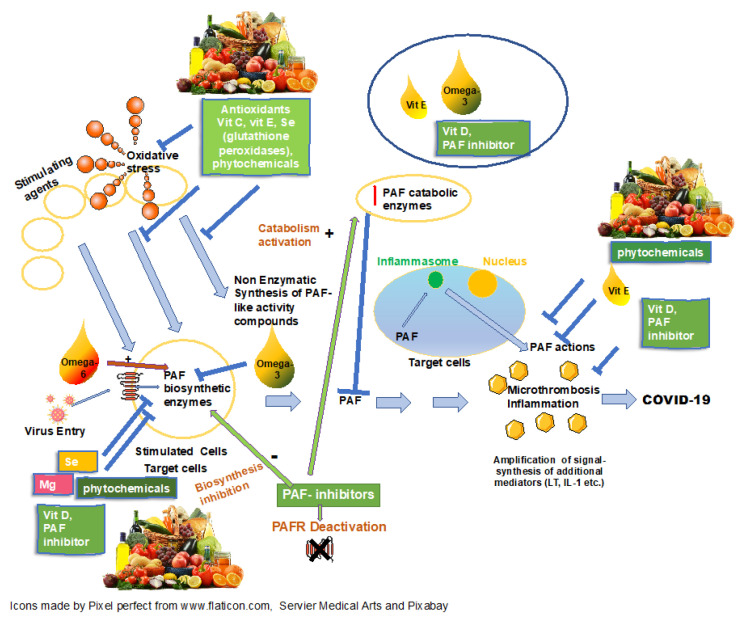Figure 1.
Protective role of nutrition against COVID-19 through modulation of PAF actions and metabolism. Figure legend: Various agents activate cells (usually mast cells) and secrete platelet activating factor (PAF). The produced PAF then affects various target cells (tissue-organs). In activated target cells, coronavirus 19 binds to PAF receptors (PAFRs) exposed to their pericellular membrane, enters these cells more easily and further induces PAF production. The action of PAF through inflammasomes, which is not mediated through PAFRs should not be ignored. Of course, the virus can also enter and act on the initially activated cells (usually mast cells) causing its known actions. Prolonged and replenished PAF production (feedback control) goes hand in hand with a prolonged inflammatory and prothrombotic response and the characteristic phenotypic manifestations of COVID-19. PAF inhibitors can act (i) by inactivating PAFRs and (ii) by affecting PAF metabolism. PAF inhibitors have been found to typically reduce the activity of one or both PAF key biosynthetic enzymes (regulatory enzymes) and/or increase the activity of the PAF key degrading enzyme. The role of antioxidants, micronutrients and phytochemicals that limits the initial activation by reducing oxidative stress and/or the production of PAF-like activity compounds in a non-enzymatic way is also pointed out.

